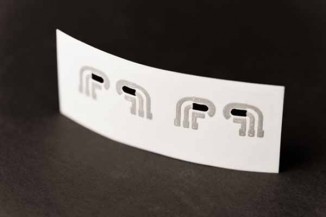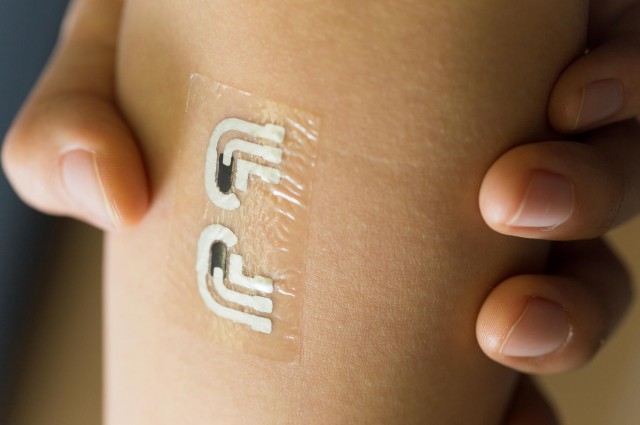California researchers have developed a temporary tattoo that both extracts and measures the level of glucose, a promising step forward in noninvasive testing for patients with diabetes.
The flexible, easy-to-wear sensor was developed and tested by graduate student Amay Bandodkar along with colleagues at the University of California, San Diego’s NanoEngineering Department and the Center for Wearable Sensors. Bandodkar said this “proof-of-concept” tattoo could pave the way for the Center to explore other uses of the device, such as detecting important metabolites in the body or delivering medicines through the skin.
The research team is also working on ways to make the tattoo last longer while keeping its overall cost down, he noted. “Presently the tattoo sensor can easily survive for a day. These are extremely inexpensive—a few cents—and hence can be replaced without much financial burden on the patient.”
CHECK OUT: New Glasses Help the Color-blind to See Greens, Reds for the First Time
The Center “envisions using these glucose tattoo sensors to continuously monitor glucose levels of large populations as a function of their dietary habits,” Bandodkar said. Data from this wider population could help researchers learn more about the causes and potential prevention of diabetes, which affects hundreds of millions of people and is one of the leading causes of death and disability worldwide.
People with diabetes often must test their glucose levels multiple times per day, using devices with unpleasant needles to extract a blood sample, so researchers have been searching for less invasive methods.
 In their report, “Tattoo-Based Noninvasive Glucose Monitoring” published December 12 in the journal Analytical Chemistry, Professor Joseph Wang and his co-workers in the laboratory describe the flexible device, which consists of carefully patterned electrodes printed on temporary tattoo paper. A very mild electrical current applied to the skin for 10 minutes forces sodium ions in the fluid between skin cells to migrate toward the tattoo’s electrodes. These ions carry glucose molecules that are also found in the fluid. A sensor built into the tattoo then measures the strength of the electrical charge produced by the glucose to determine a person’s overall glucose levels.
In their report, “Tattoo-Based Noninvasive Glucose Monitoring” published December 12 in the journal Analytical Chemistry, Professor Joseph Wang and his co-workers in the laboratory describe the flexible device, which consists of carefully patterned electrodes printed on temporary tattoo paper. A very mild electrical current applied to the skin for 10 minutes forces sodium ions in the fluid between skin cells to migrate toward the tattoo’s electrodes. These ions carry glucose molecules that are also found in the fluid. A sensor built into the tattoo then measures the strength of the electrical charge produced by the glucose to determine a person’s overall glucose levels.
“The concentration of glucose extracted by the non-invasive tattoo device is almost hundred times lower than the corresponding level in the human blood,” Bandodkar explained. “Thus we had to develop a highly sensitive glucose sensor that could detect such low levels of glucose with high selectivity.”
The researchers say the device could be used to measure other important chemicals such as lactate, a metabolite analyzed in athletes to monitor their fitness. The tattoo might also someday be used to test how well a medication is working by monitoring certain protein products in the intercellular fluid, or to detect alcohol or illegal drug consumption.
(Source: University of California San Diego)
Story tip Kelly Harrington




















